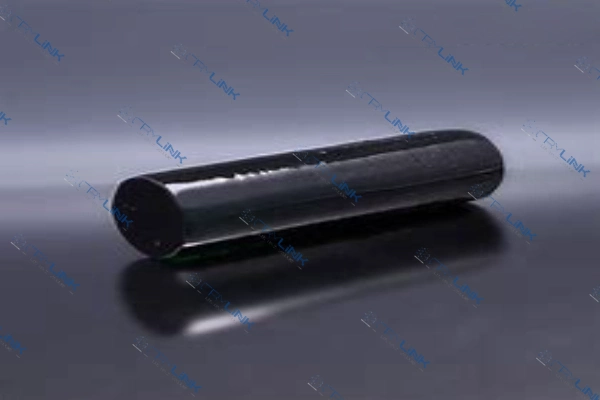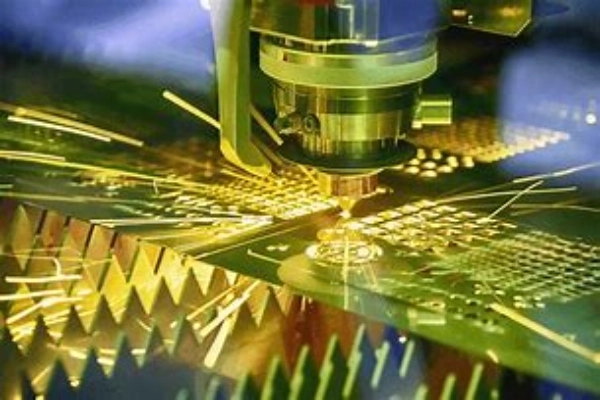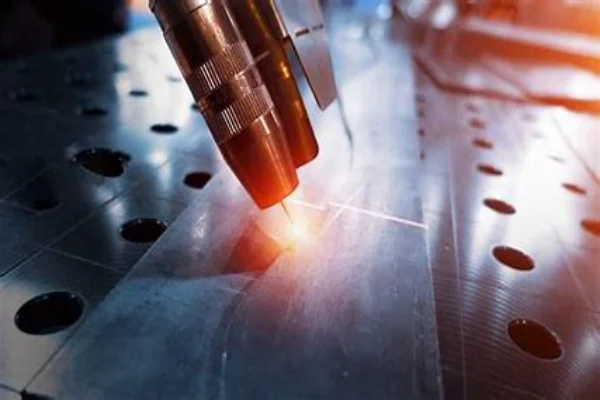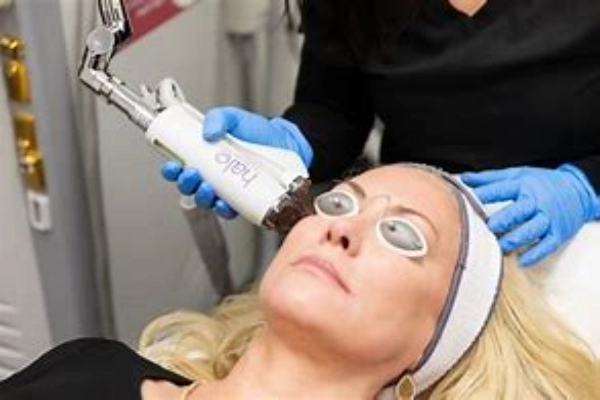The term Cr,Tm,Ho:YAG might appear esoteric to many. Yet, in the realm of laser technology, it’s a pivotal component. Dive deep with us as we address 10 frequently asked questions to shed light on Cr,Tm,Ho:YAG.

What are the basic constituents of the Cr,Tm,Ho:YAG crystal?
Cr,Tm,Ho:YAG, a term often resonating with intricacy and sophistication, refers to a specially crafted crystal, composed of Chromium, Thulium, and Holmium, all doped into a Yttrium Aluminum Garnet matrix. At first glance, this composition might appear as a mere juxtaposition of metals and compounds. However, upon closer examination, it’s evident that the union of these elements is the result of meticulous scientific understanding and experimentation.
Each component plays a pivotal role in bestowing this crystal with its distinct characteristics. Chromium, for instance, acts as more than just a filler or a base. It serves as a sensitizing agent, playing an integral role in enhancing the absorption process. Its presence ensures that the crystal can efficiently harness energy, a critical aspect of its lasing capability.
Then we have Thulium and Holmium. Far from being mere spectators, these elements act as the core activators within the crystal. They are central to initiating and sustaining the laser process. Their atomic structures and properties are such that they resonate at wavelengths ideal for a plethora of applications, especially in the medical and industrial realms.
Yttrium Aluminum Garnet, the primary substrate in which these elements are doped, is not an arbitrary choice either. This garnet provides the perfect lattice structure, ensuring that the doped elements are evenly distributed and can function optimally. Its stability ensures that the crystal retains its integrity even under high energy operations, preventing premature degradation and wear.
It’s fascinating how the amalgamation of these elements results in a crystal with such unparalleled lasing properties. Like an orchestra where each instrument contributes to the symphony, in Cr,Tm,Ho:YAG, each element plays its part to perfection, creating a masterpiece that stands at the forefront of laser technology.

What’s the primary application of this crystal in laser technology?
The Cr,Tm,Ho:YAG crystal isn’t merely another addition to the vast landscape of laser technology components. It’s a pinnacle achievement, characterized by its unique capability to produce laser emissions in the ever-so-critical mid-infrared range. This specific range of emission, while sounding technical, holds profound implications for its applicability and versatility.
Let’s first address its medical applications. In medicine, accuracy and safety are paramount. Procedures often require tools that can target specific cells or structures without affecting adjacent healthy tissues. This is where the mid-infrared range shines. The emissions from Cr,Tm,Ho:YAG can penetrate deep tissues, targeting maladies or obstructions, without causing collateral damage to surface tissues. Such precision is invaluable in treatments like lithotripsy, where kidney stones are shattered without invasive surgeries. Similarly, in ophthalmology, the precision offered by this crystal ensures surgeries are conducted with minimal risk and maximum efficacy.
Transitioning to its industrial implications, the uniqueness of this crystal becomes even more pronounced. Industrial applications often demand lasers that can cut, weld, or engrave with unparalleled precision. The mid-infrared emissions from the Cr,Tm,Ho:YAG crystal are adept at delivering this. Whether it’s engraving intricate patterns on metals or ensuring a seamless weld joint, the crystal’s emissions ensure the task is executed with pinpoint accuracy, minimizing waste and enhancing product quality.
But it’s not just about precision. The energy efficiency and consistency of emissions from this crystal mean that industrial processes can run longer with less downtime. The associated cost savings and productivity enhancements are thus significant.
In a world where laser technology continues to permeate every facet of our lives, from the gadgets we use to the medical treatments we undergo, the Cr,Tm,Ho:YAG crystal stands out. Its unparalleled ability to produce emissions in the mid-infrared range is not just a scientific achievement; it’s a testament to human ingenuity and the relentless pursuit of excellence.

How does Cr,Tm,Ho:YAG differ from other types of laser crystals?
The realm of laser crystals is diverse and vast, with each crystal offering a unique set of properties tailored to specific needs and applications. Within this landscape, Cr,Tm,Ho:YAG emerges not merely as an option but as a paragon of laser crystal technology.
One of the standout features of Cr,Tm,Ho:YAG is its broad tuning range. In layman’s terms, this means the crystal can be fine-tuned to produce laser emissions at a wide spectrum of wavelengths. Such adaptability is invaluable in both research and applied scenarios. For researchers, it offers a versatile tool, allowing them to explore multiple facets of laser applications without being constrained by the limitations of a narrow tuning range. In applied settings, be it medical or industrial, this broad range ensures that the crystal can be calibrated for optimal performance, tailored to the specific needs of the task at hand.
Beyond the tuning range, the beam quality of Cr,Tm,Ho:YAG is second to none. A high-quality beam, in the context of lasers, refers to a beam that is consistent, focused, and devoid of aberrations. This is of paramount importance, especially in applications where precision is crucial. Imagine a medical procedure where the laser needs to target a minuscule tumor without affecting surrounding tissues. The exceptional beam quality ensures that the procedure is safe, effective, and minimizes potential complications.
Lastly, the energy efficiency of Cr,Tm,Ho:YAG deserves special mention. At a time when sustainability and resource conservation are global imperatives, this crystal’s ability to produce potent laser emissions with minimal energy input is a game-changer. Not only does this translate to cost savings in operational scenarios, but it also aligns with global sustainability goals, making Cr,Tm,Ho:YAG a crystal of choice for the environmentally conscious.
In summation, while there are numerous laser crystals with their own sets of merits, Cr,Tm,Ho:YAG distinguishes itself through a combination of adaptability, precision, and efficiency. It’s a testament to the advancements in laser technology, showcasing what’s possible when science, innovation, and vision converge.

In the medical field, what are the main treatments and surgeries that employ Cr,Tm,Ho:YAG?
Within the medical arena, the use of Cr,Tm,Ho:YAG has revolutionized certain procedures, offering both practitioners and patients safer and more efficient treatment alternatives. One of the most heralded applications is lithotripsy. Traditionally, treating kidney stones was a daunting process, often necessitating invasive surgeries. However, with the advent of Cr,Tm,Ho:YAG lasers, doctors can now fragment these stones non-invasively. The laser’s precise targeting ensures the stone is disintegrated without harming surrounding tissues, drastically reducing recovery time and potential complications.
Beyond lithotripsy, Cr,Tm,Ho:YAG has found a significant place in dermatology. Its specific wavelength range allows for deep tissue penetration without adversely affecting the skin’s surface. This makes it an invaluable tool for treating subsurface skin conditions or for procedures that require precision without external scarring. Surgeons also employ this laser in delicate surgeries where the laser’s consistency and focus can make a difference between a successful operation and potential risks. All in all, Cr,Tm,Ho:YAG’s contributions to the medical field are profound, changing the landscape of many treatments and surgeries.
What’s the wavelength range of the Cr,Tm,Ho:YAG laser?
The specific emission around the 2-micrometer wavelength offered by the Cr,Tm,Ho:YAG laser is not an arbitrary characteristic but rather a result of its unique composition. This mid-infrared range holds significant value, especially in the medical sphere. While many lasers interact primarily with surface structures, the 2-micrometer wavelength allows the Cr,Tm,Ho:YAG laser to delve deeper, interacting with tissues beneath the surface.
This capability is invaluable for medical practitioners who need to target ailments deep within the body without risking damage to surface tissues or causing external burns. Furthermore, this wavelength range offers excellent water absorption characteristics, making it particularly efficient for procedures involving bodily tissues, which are predominantly water. The precision and depth enabled by this specific wavelength have therefore solidified Cr,Tm,Ho:YAG’s position as a laser of choice in numerous therapeutic and surgical scenarios
How does the thermal stability of this crystal fare?
Thermal stability, especially in the world of laser crystals, is paramount, as lasers often generate significant heat during operations. The Cr,Tm,Ho:YAG crystal’s commendable thermal stability ensures it can endure and function optimally even when subjected to intense heat or variable temperature regimes. This resilience is rooted in its unique compositional matrix, enabling it to maintain its structural integrity and continue producing high-quality laser outputs even in challenging thermal conditions.
For applications that demand prolonged laser activity or occur in high-temperature environments, this thermal stability translates to consistent performance, reduced downtime, and extended crystal longevity. It’s this robustness against temperature-induced challenges that further cements Cr,Tm,Ho:YAG’s reputation as a preferred choice in high-performance laser systems.

What are the key industrial applications of the Cr,Tm,Ho:YAG laser?
In the industrial domain, these lasers are employed for precise cutting, engraving, and welding. Their precision and efficiency make them a preferred choice for these tasks.
How energy efficient is the Cr,Tm,Ho:YAG laser?
The laser is highly energy-efficient due to its unique composition. It outperforms many other laser types in terms of energy consumption, making it both cost-effective and eco-friendly.
Are there any ongoing technological advancements or research to enhance the performance or applications of Cr,Tm,Ho:YAG?
Absolutely. Given the ever-evolving realm of laser technology, continuous research is being undertaken to further optimize the crystal’s performance and discover new applications.
How does the longevity and durability of Cr,Tm,Ho:YAG compare with other YAG crystals?
The Cr,Tm,Ho:YAG crystal is known for its structural stability, offering exceptional longevity and resistance to wear and tear. It often surpasses many other YAG crystals in terms of lifespan and durability.
Conclusion
The intriguing world of Cr,Tm,Ho:YAG remains an essential aspect of laser technology. Understanding its properties, applications, and advantages provides insights into its vast potential in various fields. As technology continues to evolve, it’s evident that Cr,Tm,Ho:YAG will play an increasingly significant role in the future of laser applications.

Frank
Frank graduated from the University of Shanghai for Science and Technology, majoring in optics. As a technical engineer at Crylink Company, he deeply understands crystal materials and laser components.
Related Video(s) with this Article
Related Product(s) with this Article
Related Application(s) with this Article
